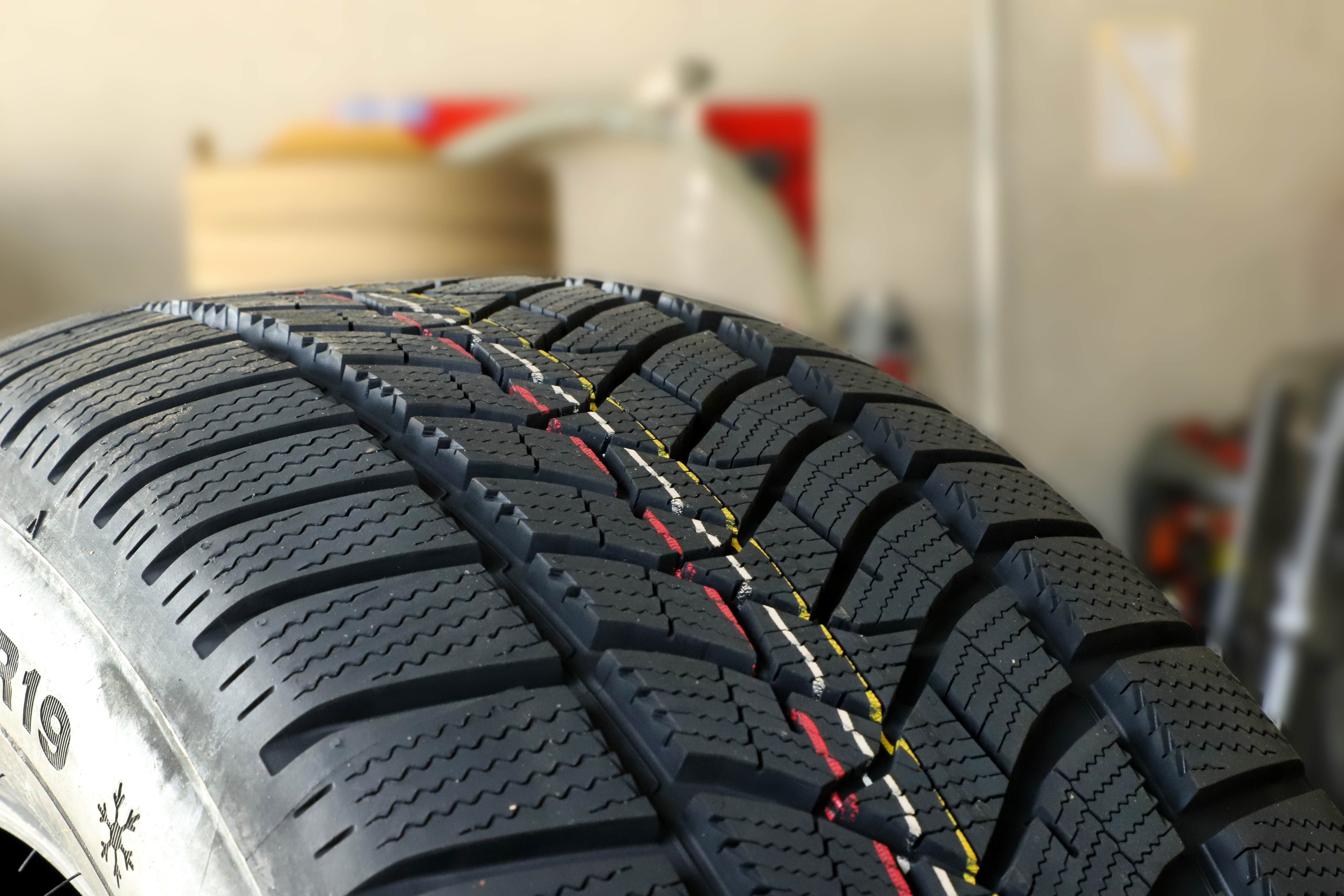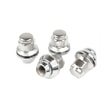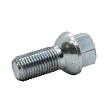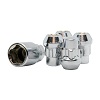Minimum tread depth – the invisible safety limit.
At first glance, tire tread appears to be just a pattern of grooves on the rubber surface. In reality, however, it's a key element determining driving safety—it's responsible for water drainage, cornering grip, and braking performance. Although regulations clearly define the minimum tread depth , practice shows that the legal limit doesn't guarantee complete safety. Many drivers underestimate this aspect, focusing solely on the legal minimum, rather than the actual condition of their tires. In this article, we'll take a closer look at the risks of driving on worn tires, how tread depth affects vehicle handling, and why it's worth replacing your tires earlier than the law requires.

Minimum tread depth and legal regulations
Although many drivers consider tire condition to be secondary, it's the tread depth that determines a car's road holding. Therefore, both in Poland and throughout the European Union, there are clear regulations specifying the minimum tread depth that must be adhered to. It's worth knowing these regulations, as driving on worn tires not only poses a risk of accidents but also carries significant legal penalties.
National and European tire tread standards
According to Polish regulations, the answer to the question " what is the minimum permissible tread depth for a tire? " is unequivocally: 1.6 mm . This is the limit below which a tire is considered unusable. The same standard applies in most European Union countries, meaning that regardless of whether you're driving in Poland, Germany, or France, the regulations are consistent.
The consequences of driving on tires worn below the legal minimum can be severe. Drivers risk not only fines and having their vehicle registration documents confiscated , but also problems with potential claims settlement. Insurance companies may refuse to pay compensation if they determine that the vehicle did not meet technical requirements. In practice, this means that the savings on tire replacement can cost many times more than purchasing a new set.
Tread Wear Indicators (TWI) and Simple Measurement Methods
To make it easier for drivers to monitor tire condition, manufacturers have equipped tires with special Tread Wear Indicators (TWIs) . These are small protrusions located in the tread grooves. When the tire tread wears down to 1.6 mm , the indicators become clearly visible, signaling the need to replace the tires. TWIs therefore act as a limiter in the tire , clearly indicating the limiting point of tire life.
In addition to the factory gauges, it's a good idea to regularly measure your tire tread yourself. The most accurate results are obtained with a special tread depth gauge, available at automotive stores. However, at home, you can use simple methods – for example , a 1 złoty coin with a gold rim of about 3 mm. If the entire gold stripe is visible when you insert the coin into the tread groove, it means the tire is severely worn and needs to be replaced.
What is the real safe tread depth? – Beyond the legal minimum
The minimum tread depth required by law is 1.6 mm. However, practice and road tests clearly show that this value does not provide adequate safety in many situations. The shallower the tread, the less effective the tire is at evacuating water, mud, or snow. Braking distances are significantly longer, and the risk of skidding increases even at relatively low speeds. Therefore, the law sets an absolute minimum, but for real safety, drivers should react much sooner.
Expert recommendations for summer, winter and all-season tires
Tire experts and manufacturers agree that although the regulations specify a tread depth of 1.6 mm, in practice, a tire worn to this extent no longer fulfills its intended purpose. For summer tires, to maintain full water drainage efficiency and confident handling on wet surfaces, experts recommend a tread depth of at least 3 mm .
This is even more important for tires used in harsh weather conditions. The minimum tread depth for winter tires should be around 4 mm , similar to all-season tires. This is because deeper grooves better cope with snow, slush, and low temperatures. Driving in winter on tires with less than 4 mm of tread dramatically increases the risk of losing traction and vehicle control.
Therefore, it is worth remembering that the minimum tread of all-season and winter tires is not 1.6 mm, but actually at least 4 mm if we want to feel safe in winter conditions.
Tread depth of a new tire – a reference point for assessing wear
To better understand when a tire begins to lose its performance, it's helpful to know what tread depth it comes with from the factory. The typical tread depth for a new summer tire is around 8 mm , while the tread depth for a new winter and all-season tire is typically 9–10 mm .
Comparing the current tread depth with the factory values allows you to assess how much life a tire actually has left. If summer tires have only 3 mm of tread remaining, it means they have worn down more than half their original value and are approaching the safety limit. The difference is even more noticeable with winter tires – a tire with 4 mm of tread depth has less than half the effectiveness of a new one, even though it still formally meets legal requirements.
Tread Height and Braking Distance – The Key to Safety
Braking distance is one of the most important parameters determining driving safety. Even modern ABS and ESP systems cannot compensate for the lack of traction resulting from worn tires. It is the tire tread that is responsible for maintaining contact with the road and evacuating water from under the wheels. The shallower the grooves, the more difficult it is to maintain stability, and the longer the braking distance.
The relationship between tread depth, wet grip and the risk of aquaplaning
The greatest danger associated with shallow tread is aquaplaning – a phenomenon where the tire loses contact with the road due to a thin layer of water forming between the rubber and the road. This situation causes the driver to lose control of the vehicle, and the car begins to "slide" across the road as if on ice.
Deep grooves in the tread act as channels that channel water sideways , helping the tire maintain traction. A new tire with 8-9 mm of tread can expel up to several liters of water per second. As it wears, its capabilities diminish dramatically – with 3 mm of tread, water evacuation efficiency drops by several dozen percent, and at the borderline minimum tread depth of 1.6 mm, the tire practically loses its ability to prevent aquaplaning.
In practice, this means that a car that was driving stably on wet surfaces moments earlier suddenly becomes unpredictable. Therefore, real safety requires reacting much earlier than the law requires.
Braking distance comparison – the numbers speak for themselves
Tests conducted by independent automotive organizations clearly show that a few millimeters of difference in tread height can decide about the life and health of road users.
- A car equipped with new tires with 8 mm of tread will stop on wet roads much faster than one with tires worn down to 3 mm. The difference can be as much as 8–10 meters at 100 km/h – the length of two passenger cars.
- When tread depth drops from 3 mm to the critical 1.6 mm, the difference becomes even more dramatic. Braking distances can increase by an additional 15–20 meters , which in an emergency can be the difference between avoiding or causing a collision.
In everyday driving, such values may seem abstract, but in a sudden braking situation, every meter counts. When a person steps onto a pedestrian crossing or another driver brakes suddenly in front of us, those extra meters determine whether we stop in time.
Therefore, instead of waiting for your tires to reach their minimum tread depth, it is worth reacting earlier and replacing them when their effectiveness begins to noticeably decrease.
It's not just the tread depth that determines tire wear - A broader look at tire condition
For most drivers, tire tread is the primary indicator of tire wear. This is a valid approach, but it's incomplete. Tires are complex products that age and deteriorate not only through wear and tear during driving. Even with the correct tread depth, tires can become unsafe due to age, mechanical damage, or deterioration of the material.
Tire age – the hidden danger of rubber
Even if the tread looks good, a tire doesn't last forever. The rubber from which it's made naturally ages . Exposure to UV radiation, moisture, temperature changes, and road salt causes it to become increasingly harder and less flexible. As a result, traction decreases, the risk of cracks and micro-damage increases, and the tire ceases to perform its intended function.
Experts recommend that for safe operation, tires should be used for a maximum of 5-6 years , with 10 years being the absolute limit, regardless of how many millimeters of tread remain. Therefore, when purchasing used tires, it's always worth checking their production date.
You can do this by reading the DOT code located on the tire's sidewall. The four digits indicate the week and year of manufacture—for example, "2519" means the tire was manufactured in the 25th week of 2019. This is a simple but crucial clue for assessing the actual condition of your tires. Learn more about the DOT code on your tire [by clicking here]
Other signs of wear and damage – what should you look for during an inspection?
It's worth checking the condition of your tires regularly, not just by checking the tread. Signs of potential problems include:
- cracks, abrasions and fissures on the side walls – resulting from age, weather conditions or hitting the curb,
- bulges and bubbles on the tread or side of the tire – often the result of damage to the casing, which may cause it to burst while driving,
- uneven tread wear – e.g. wear on one side, "toothing" or wavy abrasions, which usually indicates problems with the suspension geometry, shock absorbers or wheel balance,
- foreign bodies embedded in the tread – nails, screws or sharp stones, which can lead to slow pressure loss or sudden puncture.
Therefore, tire inspection should be comprehensive – not only with a ruler to measure the tread, but also with a visual inspection of the entire tire surface.
5 mm tread – how long will it last?
A common question is: how long will 5 mm of tread last? The answer isn't clear-cut, as tire life depends on driving style, road surface type, weather conditions, and the weight and power of the vehicle.
However, some general rules can be followed. For summer tires, 5 mm is still a level that ensures decent safety and performance. However, the distance to the 1.6 mm limit will be significantly shorter than with a new set of tires. For winter and all-season tires, 5 mm is a warning sign – the tire has already lost a significant amount of its effectiveness in evacuating snow and slush. Therefore, experts advise considering replacement at this level.
To sum up – although 5 mm of tread still looks “healthy”, in practice it means that the tire is closer to the end of its lifespan than the beginning, especially when it comes to winter tires and all-season tires.




 Modern design
Modern design Perfect fit
Perfect fit High durability
High durability Free shipping within 24 hours
Free shipping within 24 hours
 Individual project
Individual project Dedicated caregiver
Dedicated caregiver













